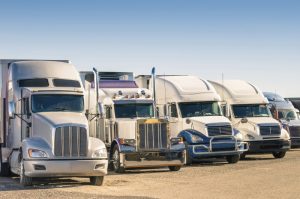 In transportation, when an asset is standing still, it is losing money. The same can be said for your business strategy: when you are standing still, you are not innovating or taking advantage of new ways to enhance efficiency or drive profitability. This is true in all industries.
In transportation, when an asset is standing still, it is losing money. The same can be said for your business strategy: when you are standing still, you are not innovating or taking advantage of new ways to enhance efficiency or drive profitability. This is true in all industries.
In the search of innovation, many companies are looking to the Internet of Things (IoT), specifically the IoT’s new real-time data sources, to help unleash the power therein.
Still, many companies are unsure how to take advantage of the IoT:
- Either they don’t know how to start and are looking for help in developing an IoT vision and resulting strategy.
- Or maybe they're already journeying down the IoT road, but are having difficulty unleashing the value they know is somewhere.
- Still yet, some companies might be in-between and looking for validation that the IoT has value for their business.
This is a relevant concern for many companies because it’s not the IoT on its own that provides the value. It’s the insight and corresponding actions taken as a result of the IoT data that are valuable. Therefore, any IoT strategy that leaves analytics out, postpones the analytics decisioning until after the IoT infrastructure is in place, or considers it as secondary in importance is just missing the boat … or train, or plane.
Applying analytics to the Internet of Things in transportation
What can analytics do in the new IoT world? Let’s start with controlling costs of your actual IoT environment and infrastructure. While this shouldn't be your primary reason for implementing analytics, this use case is meaningful, so let me explain further.
The big data arising out of connected things – via sensors, beacons, cell phones, etc. – is big in volume. No surprise there, but the data is also fast, and easily coming at your enterprise data warehouse at sub-second frequency. What data do you need to store? What data can be safely discarded, without fear of losing valuable information? Analytics, and not static business rules, answers this question. Without analytics, you might have right-sized your data collection process to begin with, but, as elements of your environment change, the information that you can glean from your data will definitely degrade.
Using transportation operations as an example, sensors on your moving assets are transmitting data. Your systems are collecting that data, or perhaps collecting a subset of data that you previously determined was relevant. But, when the environment changes, does your collection methodology change? Analytics can direct your systems to collect a different subset of data that reflects the new environment. That, in turn, informs your ability to correctly make decisions in this new environment.
As mentioned above, this use case is not the driving factor behind the use of analytics in IoT. There is no use case that singlehandedly proves the value of analytics for all of this IoT data. Instead, there are many, many compelling reasons for bringing analytics to the center of your IoT strategy, and they are all around you.
A fairly obvious and immediate business issue for analyzing the Internet of Things in transportation is to keep assets operating efficiently. In fact, one of the biggest metrics tracked within transportation is the cost of NOT operating efficiently. According to Airlines for America, for US Passenger Carriers alone, every minute of delay time costs $81.18. In Europe, delay costs are similar, with a network average value of 72€ per minute calculated by the University of Westminster in 2004.
Inefficient operations are not proprietary to airlines, of course. In rail, 25 percent of all US traffic cuts through Chicago, which is one of the most congested urban areas in the United States. The National Post reported that “it takes a [freight]train on average 33 hours to move through Chicago,” and estimates of costs due to this congestion started at $11 billion in 2006. Ten years, later and Chicago congestion has not gotten much, if any, better.
How can the combination of IoT and analytics solve these problems? The sensors I mentioned earlier are collecting real-time data on asset performance, including asset location. Analytics provides the ability to evaluate and then take action on this real-time (sensor, event and location) data as it is being generated, detecting patterns of interest as they occur, flagging anomalies in stream and sending them directly to domain-specific applications, including predictive maintenance and day-of-operations systems.
Using real-time data to enhance predictive maintenance can be game-changing for companies in the in airline, rail, train, trucking, shipping and other logistics-related industries. Real-time operational awareness coupled with analytics offers the ability to react immediately and optimally to disruptions, including unexpected congestion, and to reschedule operations accordingly. Watch this video to see how it can work:
In the transportation industry, a new journey is beginning with IoT data. Are you on board?
Read how one transportation company is using IoT data to improve fleet performance - and more.
